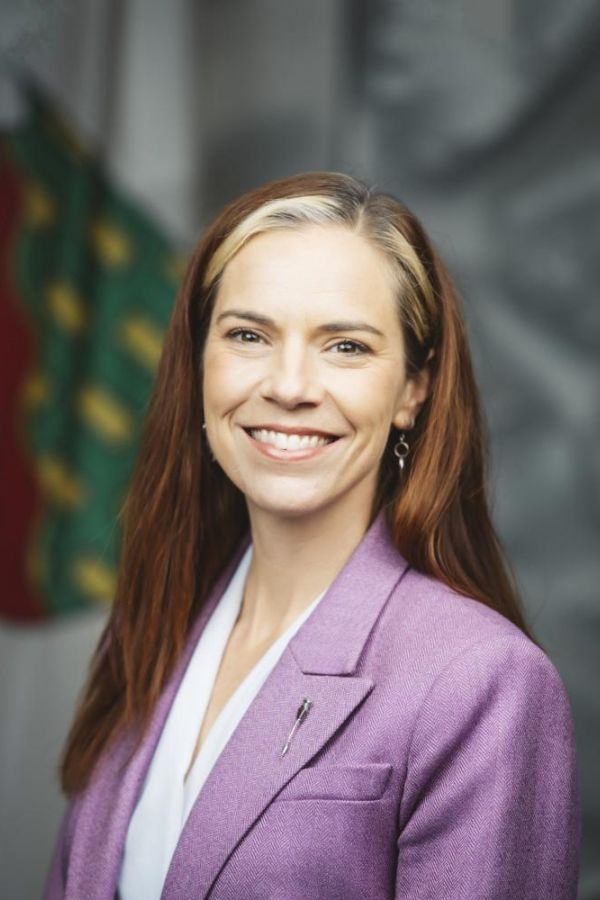Debates of March 11, 2021 (day 69)
Question 661-19(2): Caribou Emergency

Merci, Monsieur le President. Earlier today, I discussed how predator-control measures for the Bathurst caribou herd were ineffective and the lack of progress on habitat protection while the Slave Geological Province road continues to steamroll right along. Can the Minister of Environment and Natural Resources tell us what specific actions have been undertaken in the last year to protect key habitat for the Bathurst caribou herd? Mahsi, Mr. Speaker.
Thank you, Member for Frame Lake. Minister of Environment and Natural Resources.

Thank you, Mr. Speaker. I thank the Member for giving me these questions ahead of time because it's going to be pretty detailed on this one here. The range plan made nine recommendations to manage total disturbance on the range of the Bathurst caribou herd and to reduce and manage impact on the caribou and the caribou habitat. We are working on all nine recommendations and have begun. Habitat conservation is recommended in the Bathurst range plan, specifically in areas of importance to the caribou to maintain migration routes, such as key water crossings and land quarters. ENR is supporting Indigenous governments and organizations to document these key habitat features and to provide them for consideration.
As I said previously in this House, Mr. Speaker, we will continue to work collaboratively to identify appropriate legislative tools to advance the establishment of conservation areas, and we have established a new fire crew in Wekweeti to allow faster response to fire on barren-ground caribou winter habitat. We have established a caribou guardians program as also recommended in the range plan. Significant work has continued to develop a network of community-based programs that will monitor and report on caribou habitat. Mr. Speaker, it's all part of the picture. It's our wildlife. It's the conservation of our management of legal hunting, respectful hunting, the wolf program, and our habitat. Thank you, Mr. Speaker.

I want to thank the Minister for his Minister's statement there. No. Look, I do appreciate the work that he and his staff are doing on this. I just wish it was a little bit faster. I described some of the actions and tools that are supposed to be taking place as part of the implementation of the Bathurst caribou range plan, and the Minister himself mentioned the cumulative land disturbance framework. Can the Minister tell us whether this framework has been applied against the proposed Slave Geological Province road, and if so, can he share that analysis with MLAs and the public?

I will try to keep my Minister's statement short on this answer here, but we want to make sure we get that detail and that information out there. The framework was applied against the proposed Slave Geological Province road. A technical package was supported with the Bathurst caribou range plan, and yes, we will be able to provide is to SCEDE.

I appreciate the Minister's short answer yes there. That was great. The Minister obviously knows exploration and development in the range of the Bathurst caribou herd is probably at an all-time low since the 1980s as a result of the pandemic. Now would seem to be a great time to finally develop and implement mobile caribou conservation measures that would provide temporary habitat protection, so can the Minister tell us about the status of the promised mobile caribou conservation measures and when we can expect to see them finally implemented?

ENR will finalize the framework by this summer. A draft framework has provided guidance to a pilot project that was done in collaboration with our industry partner, Aurora Geosciences. Because of COVID, we had to do a desktop exercise. The outcome of the project was the need for an operational guidance document, and we are working on developing that with Aurora Geosciences. We plan to test this operational document this summer.
Thank you, Minister. Final supplementary. Member for Frame Lake.

Merci, Monsieur le President. I want to thank the Minister for that. I look forward to seeing the results of that. Of course, what elders and biologists alike say is that we need to permanently protect key habitat for barren-ground and boreal caribou as part of a balanced program. With low levels of activity and interest, we have got things like land use planning, but we also need other forms of permanent land withdrawals or protection. Can the Minister tell us what our government is doing with regard to permanent protection of key habitat for the Bathurst caribou herd? Mahsi, Mr. Speaker.

Key habitat is identified through a collaborative process with our Indigenous governments and organizations, and it helps us identify key areas that could be considered for habitat protection under the wildlife act. ENR has a series of workshops with partners to identify and prioritize areas of protection, and we are completing input from our partners and will collaboratively work on the plan to clarify key areas to be considered for habitat protection. Thank you, Mr. Speaker.
Thank you, Minister. Oral questions. Member for Great Slave.
















